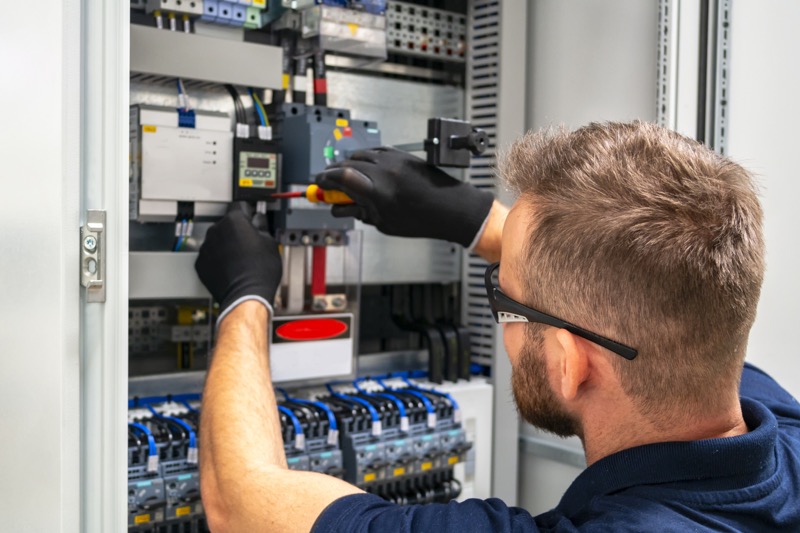If you’re experiencing trouble with your electrical sockets, you can take several simple steps. First, you can check to see if there’s a tripped circuit breaker, blown fuse, or loose connection to the switch. If you can’t find the issue, you can try to reset the socket by pushing the “reset” button on your appliance. Secondly, check if the plug is firmly inserted into the electrical socket.
Tripped circuit breaker
If you notice that several electrical sockets in a room are not working, the problem could be caused by a tripped circuit holder. To reset a tripped breaker:
- Flip the appropriate switch.
- Push the breaker handle fully to the off or on position.
- If the sockets still don’t work, check the fuse box to see if there is a short circuit or ground fault.
The circuit holder in the main power panel contains the circuit breakers for all electrical outlets. These circuit breakers are labeled by the electrical contractor who installed them. Normally, the circuit breaker will trip if the current is too high. But if it trips with no plugged-in device plugged in, it can cause several problems. To fix the problem, consult a professional for electrical maintenance.
Faulty receptacle
Listed below are some tips for troubleshooting faulty electrical sockets in your home. If you suspect that the outlet is faulty, you may need to replace it. It is simple to replace a receptacle and can give you peace of mind. If the outlet is not staying in place, it is likely that the receptacle is worn out and needs replacement. Buying new outlets is the best solution for this problem, and will prevent you from having to deal with this issue again.
If you suspect a faulty socket, you must first unplug all appliances in the room where you are trying to test it. Then, reset the circuit breaker or replace the fuse. If the outlet still fails to function, the problem could be due to a short circuit within the switch or receptacle. In addition, if it’s working, you may have charred wire insulation.
Blown fuse
When troubleshooting a blown fuse and broken electrical sockets, there are many things to consider. A blown fuse is usually an indication of an electrical overload. While it can be frustrating to open a fuse box and discover a blown fuse, the task is not impossible. You can try unplugging appliances and re-examining the circuits. Otherwise, contact a licensed electrician for assistance.
If you suspect a blown or broken fuse, turn off all lights and appliances in the affected area. Unplug any appliances that are connected to the circuit. After that, turn off the main power to the fuse box. Before doing anything else, make sure not to overload the circuit. It’s important to be cautious and avoid touching the metal threads of a blown fuse. If you accidentally touch one of them, you could get an electric shock or burn.

Loose connection to switch
When diagnosing a broken electrical socket, you should always check for a loose connection. The wiring in these sockets can be twisted over the years and may no longer be connected properly. In this case, you should call a professional electrician to come and check the socket. If you cannot reach the electrical socket, you can also try the following tips. First, disconnect all electrical devices connected to the socket, turn off the circuit breaker, reset the GFCI and call a licensed electrician.
Check for a loose connection. If the connection is loose, check the light for flickering or a dead outlet. If it is connected loosely, check other outlets nearby for similar problems. If the wires are bent, they may be damaged and corroded. In case the connection is loose, check the switch. It may be the cause of the dead outlet. Loose connections are usually very easy to identify.
Discolored outlet
If you are noticing discoloration in your outlets, there are several possible causes. Some outlets may be overheating due to heat, while others may have broken wiring. Either way, it’s essential to contact a licensed electrical contractor for further inspection. Discolored outlets should be inspected immediately to avoid further damage to your property. Also, if you notice smoke, sparks, or a burning smell while you’re plugging them in, you should contact a professional electrician.
A discolored outlet is a sign that it’s time to have it replaced. Discolored outlets can signify that the outlet is faulty or isn’t installed properly. Also, a hot outlet could indicate a fire hazard or bad wiring. When an outlet is discolored, it’s good to cut power to it at the panel and contact an electrician immediately.














